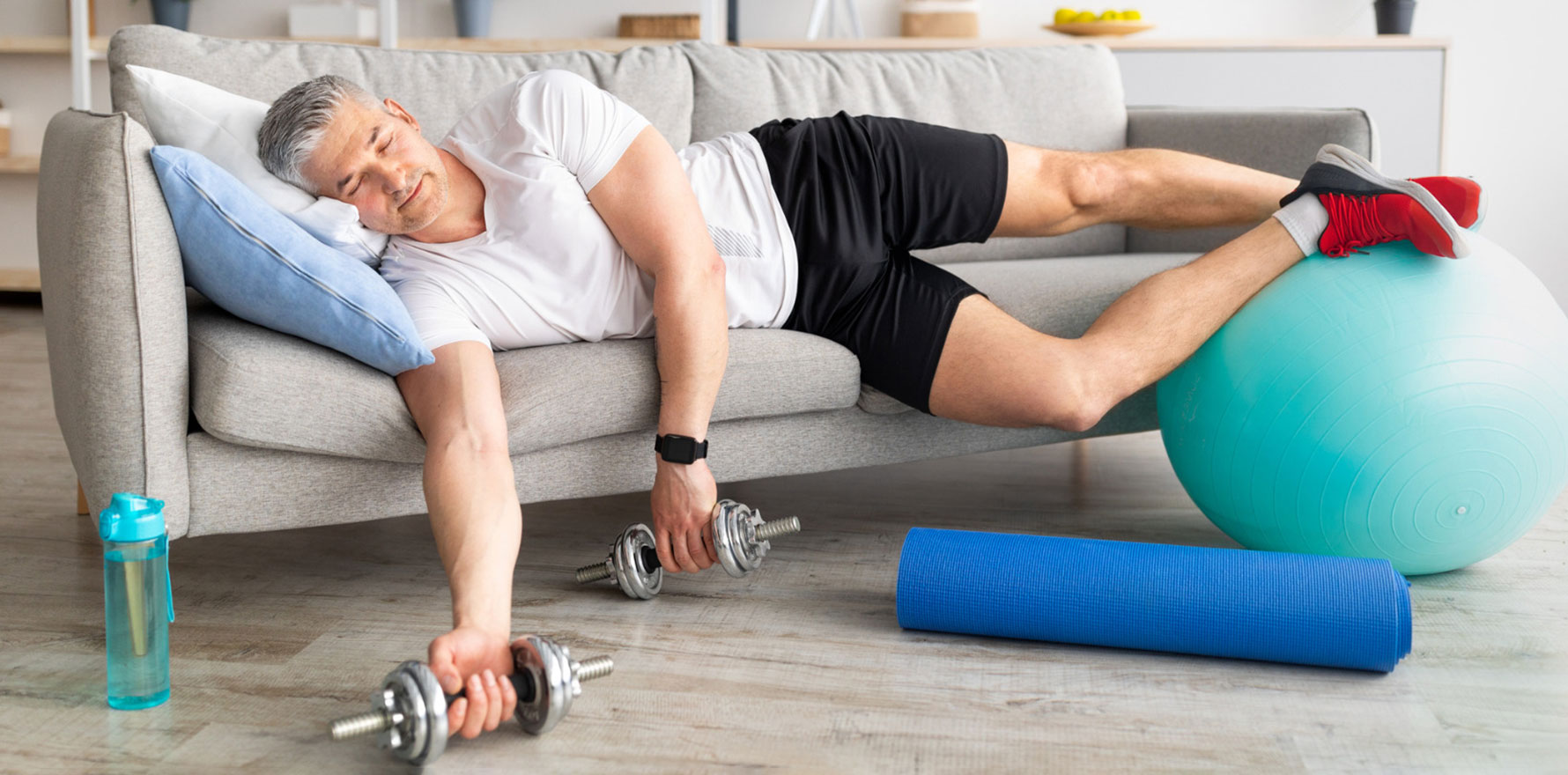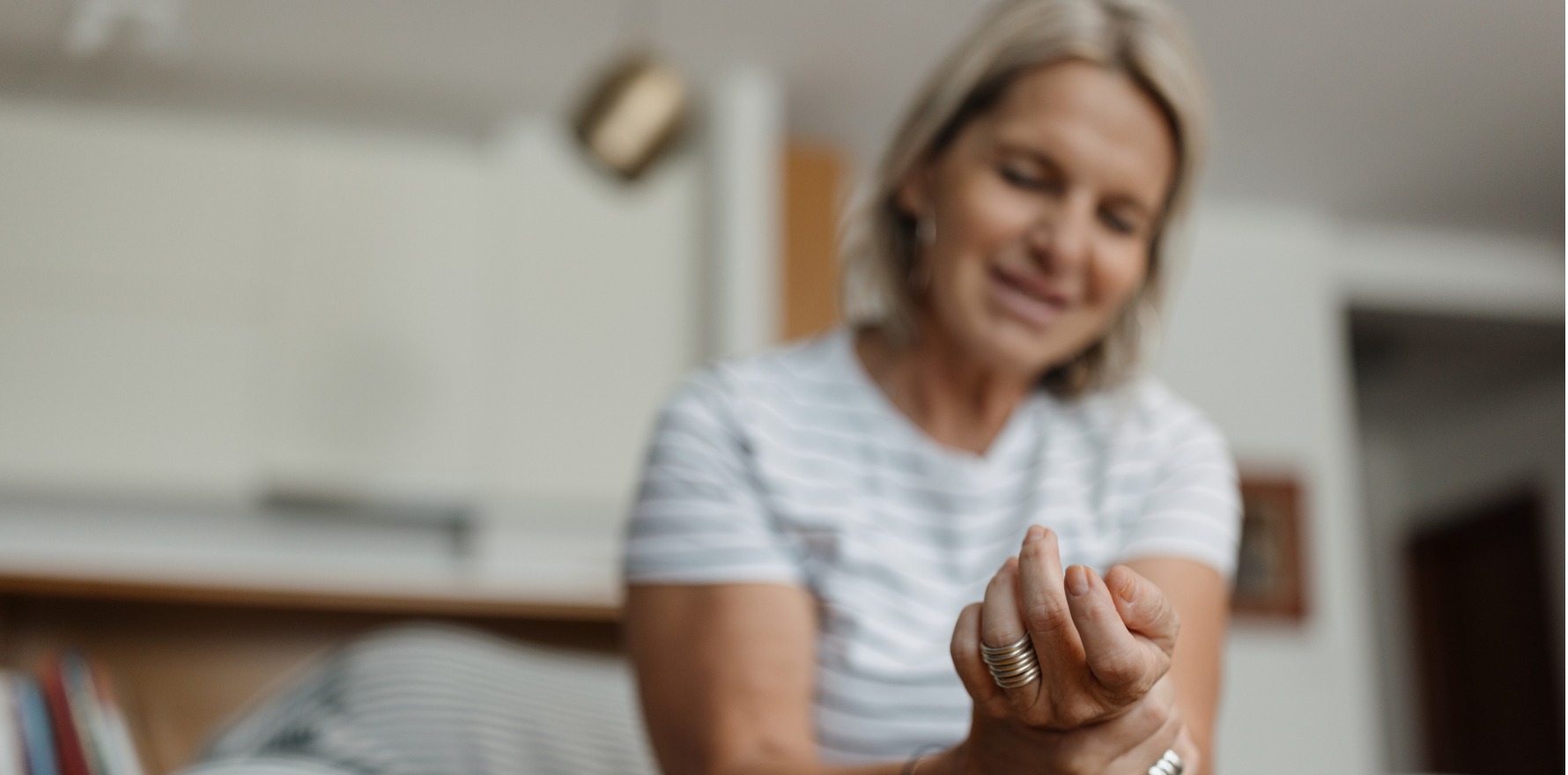Strength training can help older people fend off insomnia, research finds.
Strength or resistance training beats aerobic exercise for improving insomnia in older people – though it all helps, say the authors of a newly published review.
The systematic review and network meta-analysis of 25 randomised controlled trials found that exercise that strengthens muscles was superior to aerobic or combination exercise in improving sleep quality in people aged 60 and older.
CBT-I (insomnia-specific cognitive behavioural therapy) was first-line treatment, they said; but given the lack of qualified practitioners, picking up the weights was the next best thing. It was cheap, easy, and had added benefits such as reducing metabolic syndrome, stroke, depression and anxiety.
The 2170 total participants had a mean age of 72. The studies were largely conducted in the community (80%) rather than nursing homes, in Asia (56%), North America (16%), South America (16%) and Europe (12%).
The review looked at their self-reported improvements in sleep quality in relation to the types of exercise they undertook, because “the subjective sleep result is vital from the patient’s perspective”. These results were compared against control groups who did no physical exercise, or routine activity, or had sleep education.
The review covered:
- aerobic/endurance exercise, including cycling, dancing, hiking, jogging, long-distance running, swimming, gardening and brisk walking;
- strength/resistance exercise, including weightlifting, arm curls, wall push-ups and using resistance equipment;
- combination exercise, including a mix of balance exercise like walking, sideways walking, heel-to-toe walking, standing on one leg and step-ups; flexibility exercise like gymnastics and dance; Tai Chi, Qigong, Baduanjin yoga and Pilates; and unspecified exercise.
Sleep quality was rated using the Global Pittsburgh Sleep Quality Index (GPSQI) across seven domains: subjective sleep quality, latency, duration, efficiency, disturbance, medication use, and daytime dysfunction. The maximum score is 21. Higher scores indicate worse sleep quality.
“The strengthening exercise not only reduced GPSQI the most compared with routine activity, but also considerably decreased the score compared with the combination of aerobic and strengthening exercise groups and the combination exercise group,” the authors write.
Compared with routine activity, strength exercise reduced GPSQI by nearly six points. Aerobic exercise reduced GPSQI by three to four points, with best results for those exercising over 60 minutes, at least 100 minutes per week, for more than 10 weeks. Combination exercise participants also saw a significant reduction of two to three points, with low to moderate-intensity exercise having the greatest effect.
Participants who undertook strengthening exercises had a GPSQI score 5.75 points lower than those who just did their regular activity, 4.28 points lower than the group who did a combination of aerobic and strength exercise, and 3.21 points lower than those who did combined exercise (as described above). Sleep education resulted in a score 4.63 points lower than the scores of the regular activity group.
The translation of these findings into clinical application warranted caution, the authors warned, given that it was difficult to know the specifics of the exercises undertaken and there was limited data about intensity in particular. In addition, exercise could be challenging for older people.
South Australian GP Dr Stephanie Daley, who has a special interest in geriatric medicine with a focus on dementia, told TMR she was not surprised that exercise was able to improve sleep in older people.
“Strength-based exercise is an excellent intervention for older people and anyone from middle age to reduce impact of frailty,” she said.
“I regularly request or support people in doing strength exercises through programs such as Strength for Life and sit to stand exercises. It can greatly improve a patient’s exercise tolerance.”
The first step to managing insomnia was to investigate the cause, Dr Anthony Marinucci, a generalist aged care practitioner and national chair for the RACGP specific interest group for aged care told TMR.
Related
“There can be psychological or physical causes of insomnia. It’s really important to work out which is which and then treat appropriately. You don’t want to miss a significant medical cause, like sleep apnoea,” he said.
If the cause is psychological, CBT is the first line of treatment for insomnia, and Medicare funded psychology sessions for insomnia are available through a mental health care plan, said Dr Marinucci.
There is also an extra accreditation – Focused Psychological Strategies (FPS) Skill Training – that enables GPs to deliver cognitive behavioural therapy, which attracts a higher MBS rate.
“Good quality psychological strategies often do involve a cost barrier to a lot of patients. On the flip side, exercise is largely free and at a population level it’s much easier to access,” said Dr Marinucci.
“The concern would be that you can’t just tell someone who’s potentially more frail, with comorbidities, to go and hit the gym. There needs to be a really good, thorough assessment and a proper delivery of specific exercises,” said Dr Marinucci.
“With strengthening exercises, you have concerns that people in the old age group have things like osteoporosis and osteoarthritis, and you have to make sure that an exercise program is appropriate.”
Dr Marinucci said there were various publicly funded programs, like the inner-west Sydney Centre for STRONG Medicine located at Balmain Hospital, providing assistance to patients in undertaking appropriate exercise.
Referrals to physiotherapists, occupational therapists and exercise physiologists would also be appropriate, he said. If the patient had underlying chronic diseases, they could access subsidised visits to allied health professionals through a GP management plan.
“The one top-level thing about exercise is, in reality, there are very few downsides,” he said. “Exercise, or physical activity in general, we know, has positive health outcomes.”





